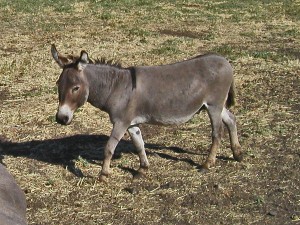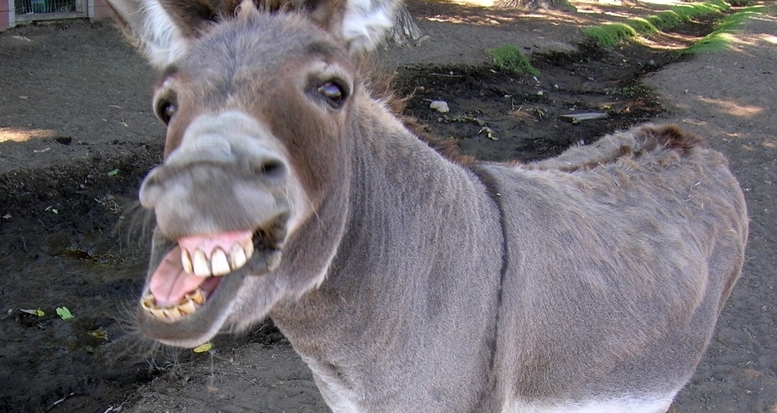Roll back the clock a small 52 million years ago, to the early Eocene epoch, where there was little to no ice at the poles. During this time there was a species that appeared, called the Eohippus. This is said to be the first genus that later developed into the equus genus, which contains horses and donkeys. (Evolution, 2011)
The Eohippus, reconstructed in a museum in Berlin, Germany
http://en.wikipedia.org/wiki/Evolution_of_the_horse
Since the Eohippus, the equids have gone through many evolutions:
- “early equids”: Orohippus (~50 mil. years ago)
- developed longer limbs, good for jumping
- most dramatic change: the teeth-developed greater grinding ability
- Epihippus (~47 mil. years ago)
- continued trend of more effective teeth
- Mesohippus (~32-24 mil. years ago)
- larger and leggier, faster running speeds
- longer snout
- Miohippus (~36 mil. years ago)
- significantly larger
- “true equids”: Kalobatippus (~17-23 mil. years ago)
- more forest-oriented
- Parahippus(~15-17 mil. years ago)
- first skull very similar to the equus genus
- Merychippus (~13-17 mil. years ago)
- developed tendency to graze effectively
- fast runner
- Hipparion (~14 mil. years ago)
- shape and size of a small pony
- Pliohippus (~12 mil. years ago)
- argued the ancestor of present day horses
- yet, have noticeably curved teeth (unlike the straight, flat ones of horses)
- Dinohippus (~2.5-5.3 mil. years ago)
- Plesippus (~2.5-3.5 mil. years ago)
- and finally, the Equus, containing the horse, donkey, zebra, etc.(Evolution, 2011)
There are two early types of donkeys, from which modern scientists believe all donkeys now a days are based off. Through migration, as well as human transport, different breeds of donkeys have developed all over the world. The two donkey breeds that seem to be the beginnings of the ass are the Somali donkeys, and Nubian donkeys: (Bough, 2011)
|
Somali |
Nubian |
 http://www.daruur.com/main/modules/extgallery/public-photo.php?photoId=188 http://www.daruur.com/main/modules/extgallery/public-photo.php?photoId=188
|
 http://www.schreinerfarms.com/donkey.html http://www.schreinerfarms.com/donkey.html
|


